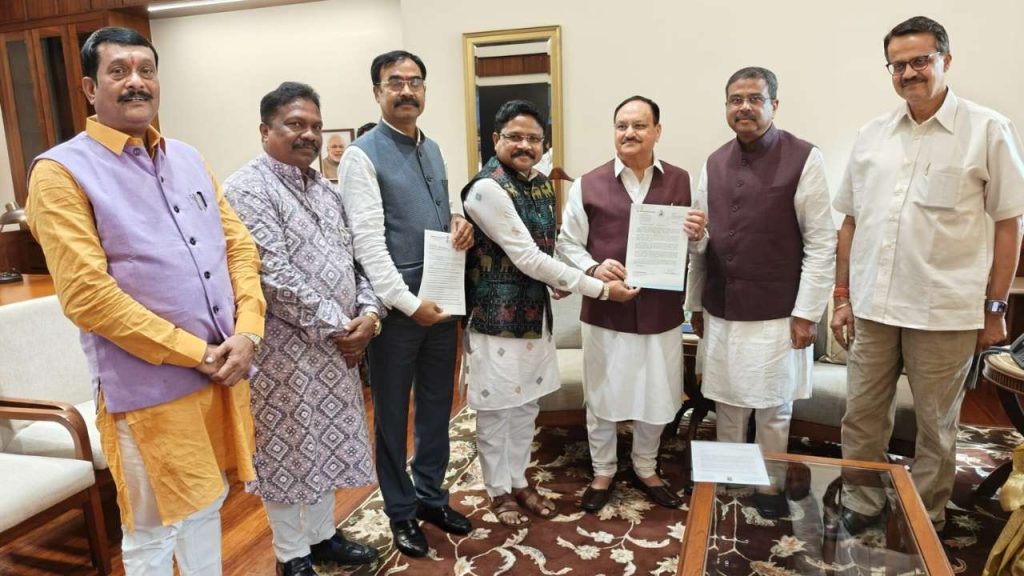BHUBANESWAR, ODISHA – The government of Odisha, a state in eastern India, is moving to significantly expand medical education by adding 200 new seats across several government-run medical colleges. This initiative is a direct response to the persistent shortage of healthcare professionals, particularly in rural and underserved regions. Officials state the plan aims to strengthen the state’s healthcare infrastructure and improve access to quality medical services for its population of over 45 million people.

Odisha’s Strategic Push to Boost Healthcare Workforce
The government’s proposal, recently announced by the Health and Family Welfare Department, focuses on increasing the intake capacity of existing government medical colleges. According to an official statement, the targeted expansion will be spread across the state’s top medical institutions, including the MKCG Medical College and Hospital in Berhampur and the Veer Surendra Sai Institute of Medical Sciences and Research (VIMSAR) in Burla. This move comes amid a nationwide push in India to increase the number of qualified doctors and specialists to meet the growing healthcare demands of its vast population.
The initiative is part of a broader strategy to address the doctor-to-patient ratio, which remains a critical challenge in many parts of India. A 2023 report from the Ministry of Health and Family Welfare highlighted that despite significant progress, the distribution of doctors remains heavily skewed towards urban centers. Odisha’s new plan is designed to not only produce more doctors but also to create a pipeline of professionals who can be deployed to district hospitals and primary health centers, particularly in the state’s interior districts.
“This is a crucial step towards achieving our long-term goal of universal healthcare,” said Niranjan Patnaik, a senior official in the Health Department. “By creating more seats, we are not just increasing numbers; we are building a more resilient and accessible healthcare system for every citizen of Odisha, regardless of their location.”
The Rationale Behind the Expansion
The decision to expand medical education capacity is driven by several key factors. First, the state has struggled to fill vacant positions for doctors and specialists in its public health facilities, especially in remote, tribal-dominated regions. According to data from the Odisha Public Service Commission (OPSC), a significant number of medical officer posts remain unfilled annually.
Second, the COVID-19 pandemic exposed critical gaps in the healthcare workforce and infrastructure. The crisis underscored the need for a robust and well-staffed medical system capable of handling large-scale public health emergencies. The Odisha government has since prioritized measures to bolster its medical human resources, with this expansion being a cornerstone of that policy.
Finally, the state is seeking to retain its talented students within Odisha. Many aspiring medical professionals from the state previously had to seek admissions in other states due to the limited number of seats. By increasing local opportunities, the government hopes to reduce this “brain drain” and ensure that the doctors trained in Odisha remain to serve its own people.

A Look at the Implementation and Challenges
The government’s plan involves a multi-pronged approach to accommodate the new students. The primary strategy includes upgrading existing infrastructure, such as laboratories, classrooms, and hostel facilities, and hiring additional faculty. This requires a substantial financial investment, which the state government has committed to allocating in its upcoming budget.
However, the expansion is not without its challenges. Critics and some education experts have voiced concerns about the quality of education and training. Dr. Sunita Rao, a retired professor of medicine from Utkal University, highlighted the potential for dilution of standards. “It’s one thing to add seats; it’s another to ensure that the quality of teaching and practical training remains top-notch,” she said in an interview. “The government must prioritize hiring highly qualified faculty and maintaining the faculty-to-student ratio stipulated by national regulatory bodies.”
The National Medical Commission (NMC), India’s apex body for regulating medical education, has strict guidelines for the infrastructure and faculty required for each medical college. The Odisha government’s plan hinges on its ability to meet these rigorous standards to secure the necessary approvals for the new seats.
Odisha Commits Over Rs 5,000 Crore to Establish 835 Model Schools for Quality Education
Yuvodaya Honors NEET and JEE Achievers: Celebrating Excellence in Education
Odisha’s Higher Education Institutions to Offer Skill-Based Degree Programs in 2025
National Context and Future Outlook
Odisha’s push is part of a broader national trend. The Indian government, under the Pradhan Mantri Swasthya Suraksha Yojana (PMSSY), has been actively supporting the establishment of new medical colleges and the expansion of existing ones across the country. The goal is to address the long-standing shortfall in medical professionals and to strengthen the public healthcare system. This has led to a significant increase in the total number of medical seats nationwide over the past decade.
The success of Odisha’s initiative will likely depend on its effective and timely execution. If successful, the additional 200 seats could lead to a steady influx of new doctors, who could then be strategically posted in areas with the greatest need. This could have a transformative effect on local communities, improving health outcomes and reducing the burden on overstretched urban hospitals.
Dr. Rajan Sahu, a public health analyst based in Bhubaneswar, noted, “The real metric of success will be whether these new graduates choose to serve in the state’s rural areas. The government needs to create attractive incentives, like better pay and housing, to encourage them to take up these postings. The seats are just the first step.”
The initiative is viewed as a critical component of Odisha’s commitment to improving public health infrastructure. The government is expected to release a detailed project report and a timeline for the implementation of the expansion in the coming months.





